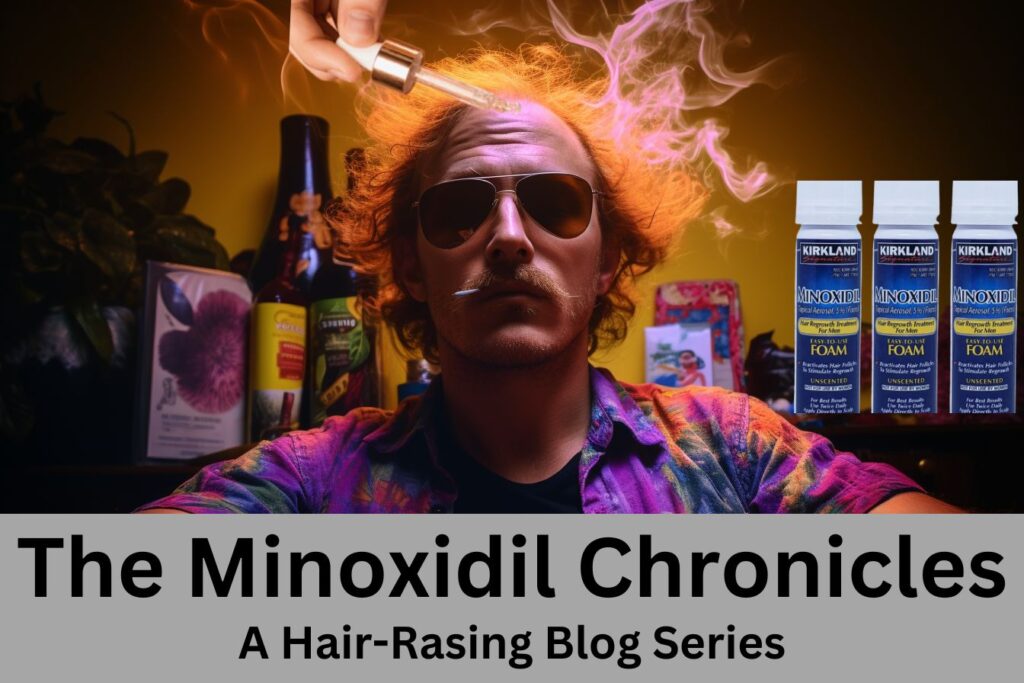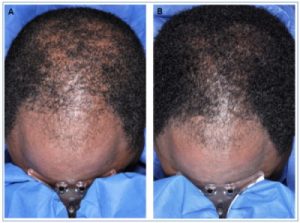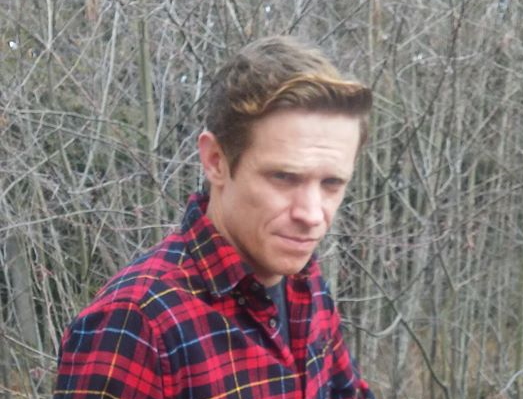Last Updated on August 15, 2023 by Robert Price
Minoxidil is supposed to treat hair loss, not accelerate the process. But many people — men and women alike — deal with the dreaded “shedding” phase when they start minoxidil, AKA Rogaine.
Is it something you should be worried about?
How long until minoxidil works as advertised?
Don’t worry. I’ll cover all your burning questions about the dreaded “shed” in this post. I’ll also offer some general minoxidil usage tips, review a few of the most common minoxidil mistakes, and much more.
Without further ado, here are seven things you should know about the shed.
1. It’s Temporary
The minoxidil shed phase typically lasts for 2 to 8 weeks.
This initial shedding might be disheartening, but it’s a sign that your hair is recalibrating and making way for stronger, healthier hair. Imagine your scalp as a garden, shedding the old like trimmed branches to welcome the growth of new strands.
If you notice continued, excessive shedding beyond 8 weeks, or if you’re concerned at any point, I’d suggest contacting a specialist.
2. You’re Destined to Lose these Hairs Anyway
Minoxidil is just speeding up the rate at which destiny manifests itself.
These hairs were on their way out.
And there’s no need to mourn the loss because of the bounty that’s on its way.
3. The Phenomenon is Known as “Immediate Telogen Release”
In case you’re unfamiliar with the hair growth cycle, here’s a quick primer; it consists of four distinct stages:
- Anagen – The growing phase. It can last anywhere from 2 to 7 years.
- Catagen – The transitional phase, where the follicle begins to shrink.
- Telogen – the resting phase. The beginning of the end.
- Exogen – The old hair sheds and new hair sprouts in its place.
According to Jeff Donovan, a Canadian dermatologist, hairs typically need to rest or “wait in line” for three months before they’re shed.
Minoxidil shortens that time span and leads to the “immediate telogen release” phase, mentioned above.
In layman’s terms, you lose a lot of hair quickly.
For example, the hairs you were supposed to lose tomorrow might fall out today.
Hairs you would have lost in two weeks fall out tomorrow. And on and on and on, until the phase ends and the medication starts working in earnest.
Again, these are hairs you were going to lose anyway. That brings me to point #4.
4. You Don’t Need to Treat It
I’ve read a number of articles suggesting various “treatments” for the shed, from essential oils to scalp massages. Now I’m feeling a little irritated, so bear with me while I go on a short rant if you will.
Look, anybody who suggests scalp massages can treat hair loss is an idiot or a huckster — and so is anyone who believes such a ridiculous claim. But plenty of sites recommend scalp massages and other bogus snake oils to hair loss sufferers. Don’t believe everything you read, even from a bulletproof source such as this one! I’m kidding!
Of course I always aim to provide reliable, in-depth, and unbiased information here at Hair Loss Daily, but I encourage you to do your own research too as you attempt to perfect your hair loss treatment regimen.
Once again: these are hairs you’re going to lose regardless, so seeking any “treatment” seems like an exercise in futility to me.
If any treatment might help in the short-term, I suspect it might be PRP, a therapy that uses a patient’s own blood platelets to stimulate temporary growth. If you’re interested, I discuss PRP in-depth in one of flagship posts listing the top 7 hair loss treatments of 2023.
5. Hair Fibers May Help During This Awkward, “Ugly Duckling” Phase
If the shedding is really bothering you, consider using a hair fiber product like Topikk or Infinity.
These products can help fill in the “problem” areas as needed.
Think of them as a quick fix while your scalp is undergoing its natural renovation.
The hair fibers intertwine with your existing strands, creating an illusion of thicker, fuller hair.
Applying hair fibers is easy.
Simply sprinkle them onto the areas that need a little extra coverage, and watch the magic unfold. They’ll cling onto your existing hair, creating a seamlessly natural look.
6. The Dread Shed Is Unrelated to “Catch-Up” Minoxidil Hair Loss
When someone quits using minoxidil, they lose all benefits they received from the treatment. That means they lose any hairs they kept or regrew as a result of using minoxidil. And often, they lose all those hairs quite quickly.
It’s important to note that “the shed” and “catch-up” minoxidil hair loss are two unrelated phenomena.
The shed is a temporary stage, and it’s actually a good thing–it means the treatment is working.
On the other hand, any losses that occur as a result of “catch-up” hair loss are most likely permanent.
7. Suffer Through It and You’ll be Rewarded
Nobody said fighting hair loss was easy! But if you overcome this hurdle, chances are you’ll be richly rewarded with better, thicker hairs than before.
When I discovered I was going bald in 2021, I never experienced a “shedding” stage. At least it wasn’t a noticeable one.
But of course everyone is different.
And overall, minoxidil has worked well for me.
There’s a good chance it will work for you too, provided you suffer through the dreaded shed phase.
Related Content

I talk about my experiences with minoxidil in my minoxidil chronicles blog series.
A Quick Minoxidil FAQ
Here are answers to a few of the most common minoxidil questions I receive.
How effective is Minoxidil?
A recent, 2015 study with 984 patients found that minoxidil was effective in the treatment of androgenic aloopecia, male pattern baldness. A few of the studies key findings included:
- In 15.9% of patients, the treatment was deemed very effective by researchers.
- It was regarded as an effective solution for hair loss in 47.8% of the participants and moderately effective in 20.6% of users.
- Overall, that’s a success rate of approximately 84%.
- Bald areas became smaller in 62% of the participants.
- Balding areas remained unchanged in 35.1% of users by the study’s conclusion. And 2.9% of the users reported larger bald areas.

Taken from a small, 8-week minoxidil study, this man showed remarkable gains with the treatment.
Overall, minoxidil works. It’s been tested and trusted for generations now. However, it’s not a miracle cure for balding and you shouldn’t expect substantial gains with the product. Some people get lucky and respond marvelously to the treatment, such as the man above. But overall, it should be looked at as a maintenance therapy.
Unlike finasteride, the gold standard in hair loss treatment for men, minoxidil doesn’t address the mechanism that causes balding in the first place: the hormone DHT.
Over time minoxidil loses some of its potency. Still, behind finasteride, it’s presently the most effective long-term solution for hair loss on the market.
Should I use the foam or the liquid?
Ultimately the choice is yours. Both treatments lead to similar outcomes. Some doctors contend the liquid works slightly better, as it provides a better vehicle for the medication to be absorbed.
The liquid is also a bit harsher — and some people are allergic to the propylene it uses as a delivery agent. Ultimately, as I say in my in-depth post comparing foam vs. liquid Rogaine, it’s probably not a bad idea to try both and see which version you prefer.
How do I apply minoxidil?
Believe it or not, user error is common with minoxidil. And not applying the treatment correctly is one to the 8 biggest minoxidil mistakes you can make.
Here are a few quick application tips.
- Use on dry hair only.
- Make sure the medication reaches your hair follicles. Avoid taking a “light touch.” It needs to penetrate the scalp just slightly in order to do its job.
- Part your hair into several sections if you can before you use it. This will help you see any “problem” spots and ensure an even application.
- Treat the crown too. Even if you’re not thinning back there yet, there’s a good chance you’ll lose ground back there eventually.
Do I have to use it twice per day?
While twice per day is the recommended dose for men, many hair loss specialists contend that using minoxidil once daily is sufficient. Dr. Bernstein of Bernstein Medical frequently makes this recommendation to his patient, with a caveat attached: he suggests using double the product during that one application.
Women are advised to either take 2 doses of the 2% minoxidil solution, or 1 dose of the 5% product.
How long until I see results?
Many users report noticing improvements — after the shedding period mentioned above — within 4-6 months, sometimes sooner. Occasionally the product can take up to a year to start working at a significant capacity.
What are the side effects of minoxidil?
Minoxidil is well-tolerated. Most reported side effects are of dermatological variety. They may include:
- Redness
- Irritation
- Burning
- Peeling
- Abnormal hair growth elsewhere (on the face, for example)
More serious side effects can occur if the medication is absorbed into the bloodstream. Minoxidil’s possible absorptive side effects include:
- Dizziness
- Faintness
- Headaches
- Heart Palpitations
On Minoxidil and the Shed – Conclusion
Again, it’s just a phase and rest assured it will be over soon! These are all hairs you’re destined to lose anyway, so you don’t need to “treat” the problem.
But if you’re concerned, speak with a dermatologist or hair loss specialist.
Robert Price is a writer, consumer advocate, and hair loss researcher with thousands of hours of experience in the field. His goal is to keep you out of the hair loss rabbit hole, underworld, or whatever you want to call it. He founded Hair Loss Daily, the unbiased hair loss blog, in 2016. You can learn more about Robert in the my story section of this website.

Hello Robert, thanks for the insights! I also heard about multiple shedding phases while on Minoxidil. Is this true ? Let’s say there has been a second and a third shed after 8 months and 15 months of usage respectively. Can I expect more thicker hairs after the shedding phase each time ? Thanks a lot